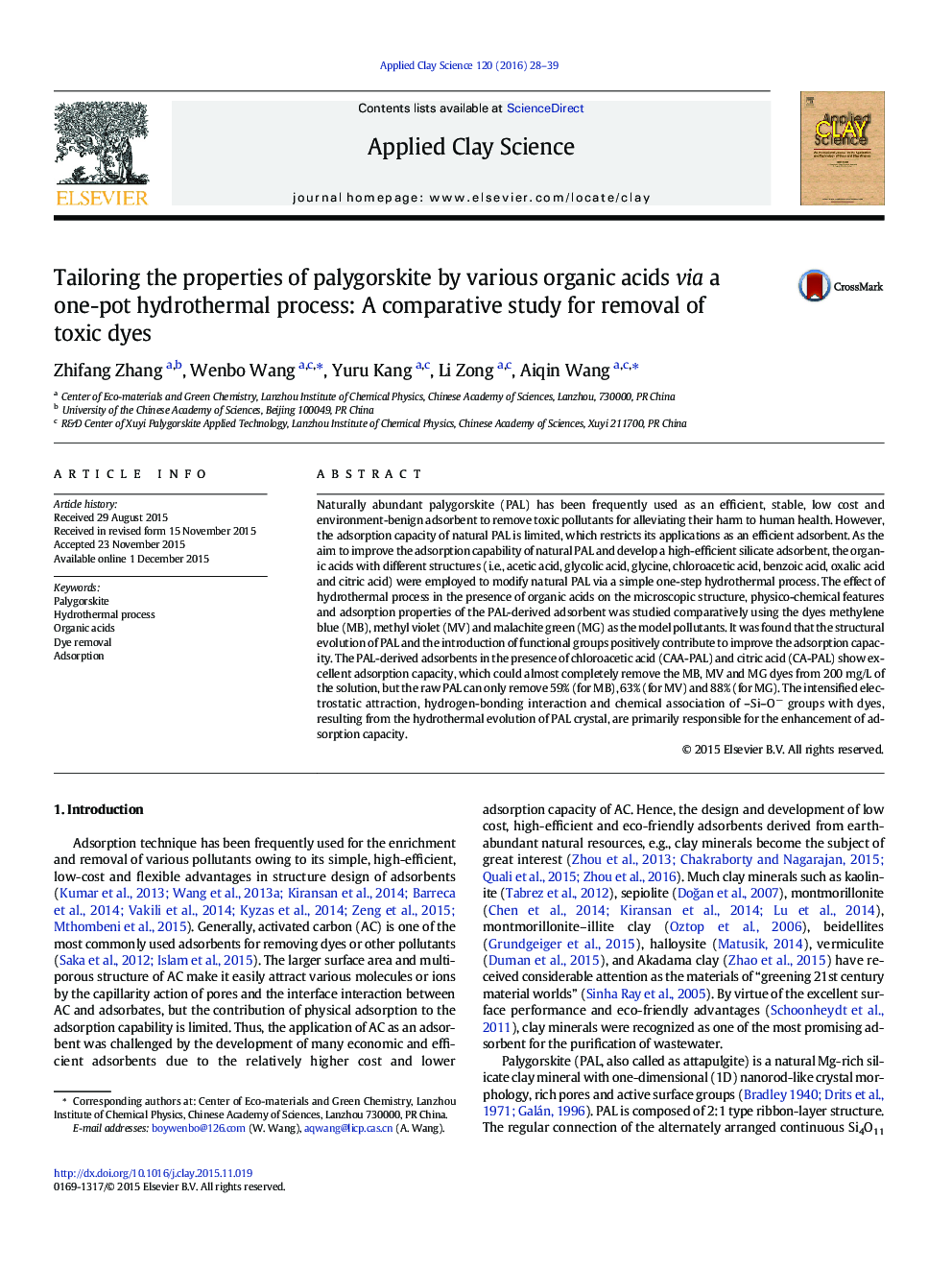| Article ID | Journal | Published Year | Pages | File Type |
|---|---|---|---|---|
| 1694172 | Applied Clay Science | 2016 | 12 Pages |
•Natural PAL was modified with organic acids by a simple hydrothermal process.•The adsorption properties of PAL for dyes were sharply enhanced after modification.•The structural evolution of PAL and functional groups contributes to the adsorption.•The PAL-derived adsorbents can be used as eco-friendly adsorbent for dyes.
Naturally abundant palygorskite (PAL) has been frequently used as an efficient, stable, low cost and environment-benign adsorbent to remove toxic pollutants for alleviating their harm to human health. However, the adsorption capacity of natural PAL is limited, which restricts its applications as an efficient adsorbent. As the aim to improve the adsorption capability of natural PAL and develop a high-efficient silicate adsorbent, the organic acids with different structures (i.e., acetic acid, glycolic acid, glycine, chloroacetic acid, benzoic acid, oxalic acid and citric acid) were employed to modify natural PAL via a simple one-step hydrothermal process. The effect of hydrothermal process in the presence of organic acids on the microscopic structure, physico-chemical features and adsorption properties of the PAL-derived adsorbent was studied comparatively using the dyes methylene blue (MB), methyl violet (MV) and malachite green (MG) as the model pollutants. It was found that the structural evolution of PAL and the introduction of functional groups positively contribute to improve the adsorption capacity. The PAL-derived adsorbents in the presence of chloroacetic acid (CAA-PAL) and citric acid (CA-PAL) show excellent adsorption capacity, which could almost completely remove the MB, MV and MG dyes from 200 mg/L of the solution, but the raw PAL can only remove 59% (for MB), 63% (for MV) and 88% (for MG). The intensified electrostatic attraction, hydrogen-bonding interaction and chemical association of –Si–O− groups with dyes, resulting from the hydrothermal evolution of PAL crystal, are primarily responsible for the enhancement of adsorption capacity.
Graphical abstractFigure optionsDownload full-size imageDownload as PowerPoint slide
